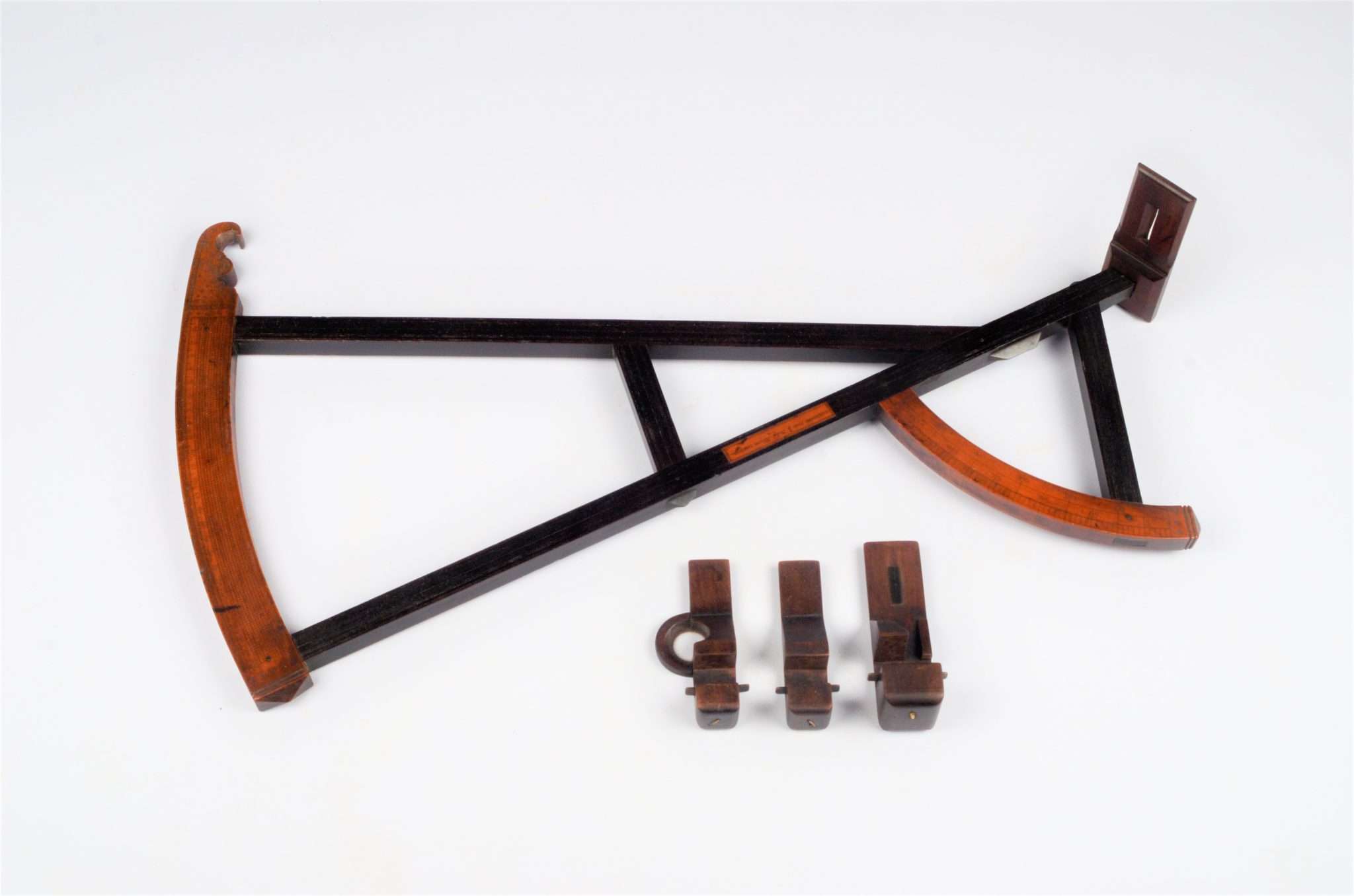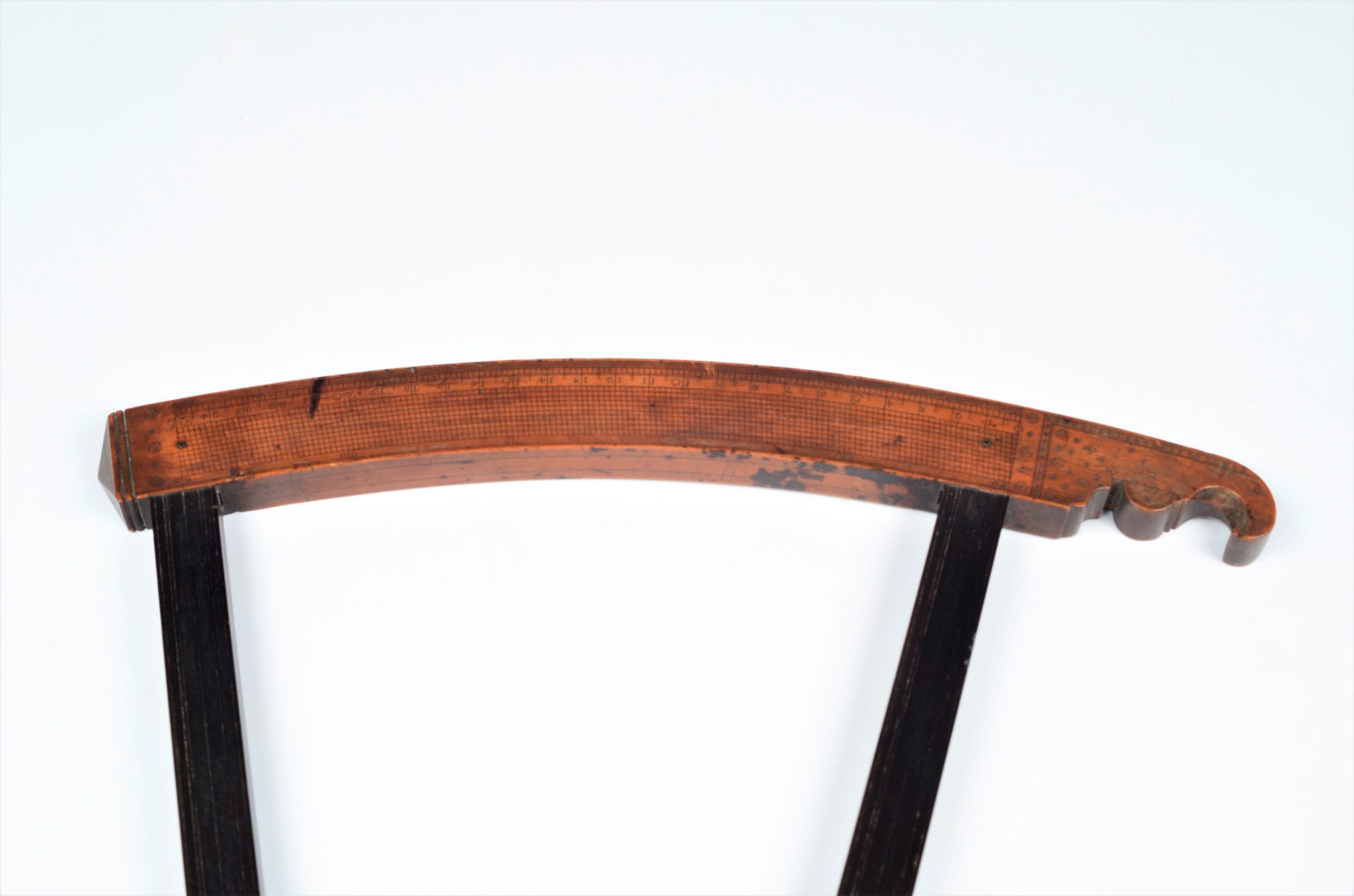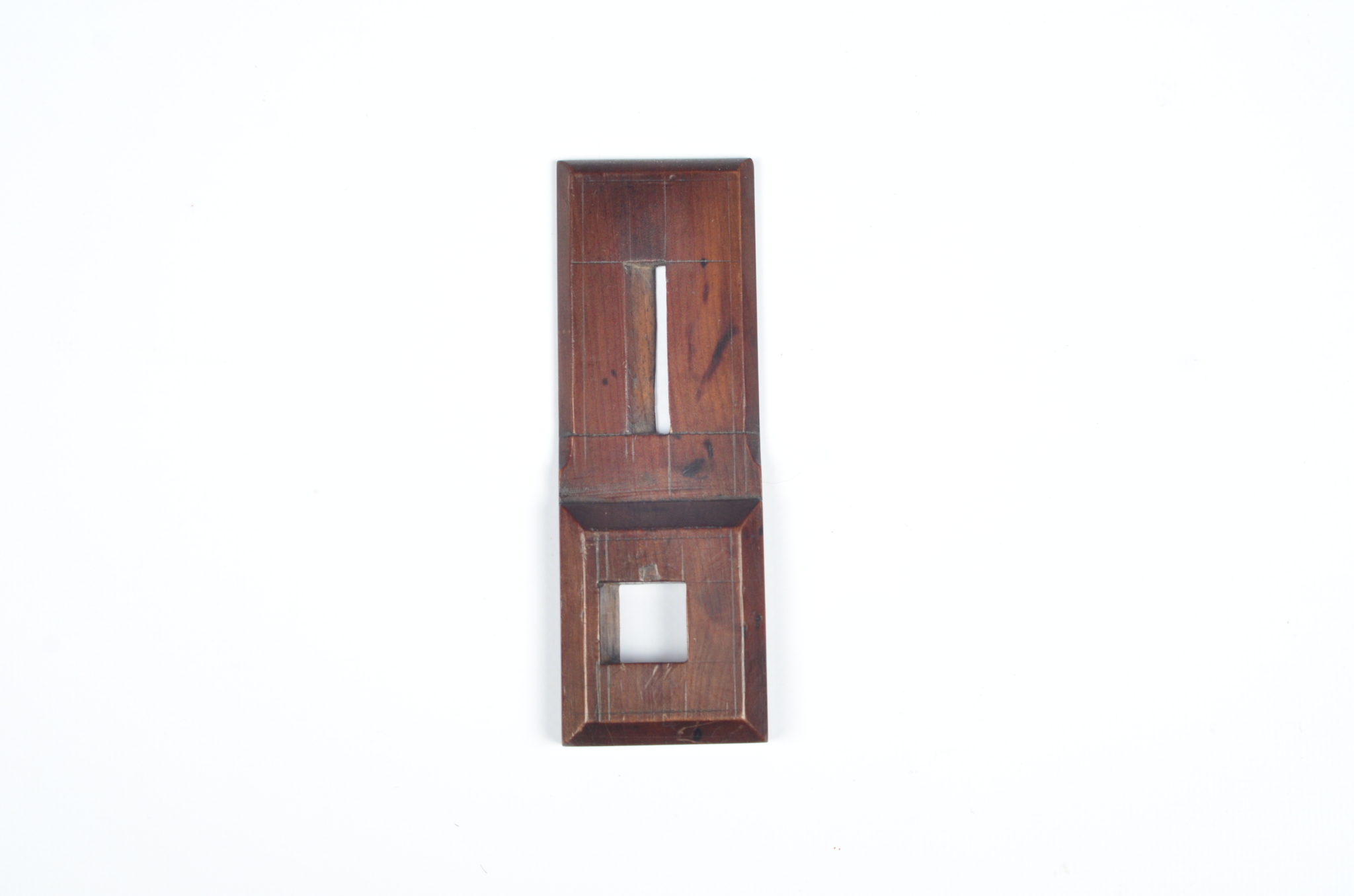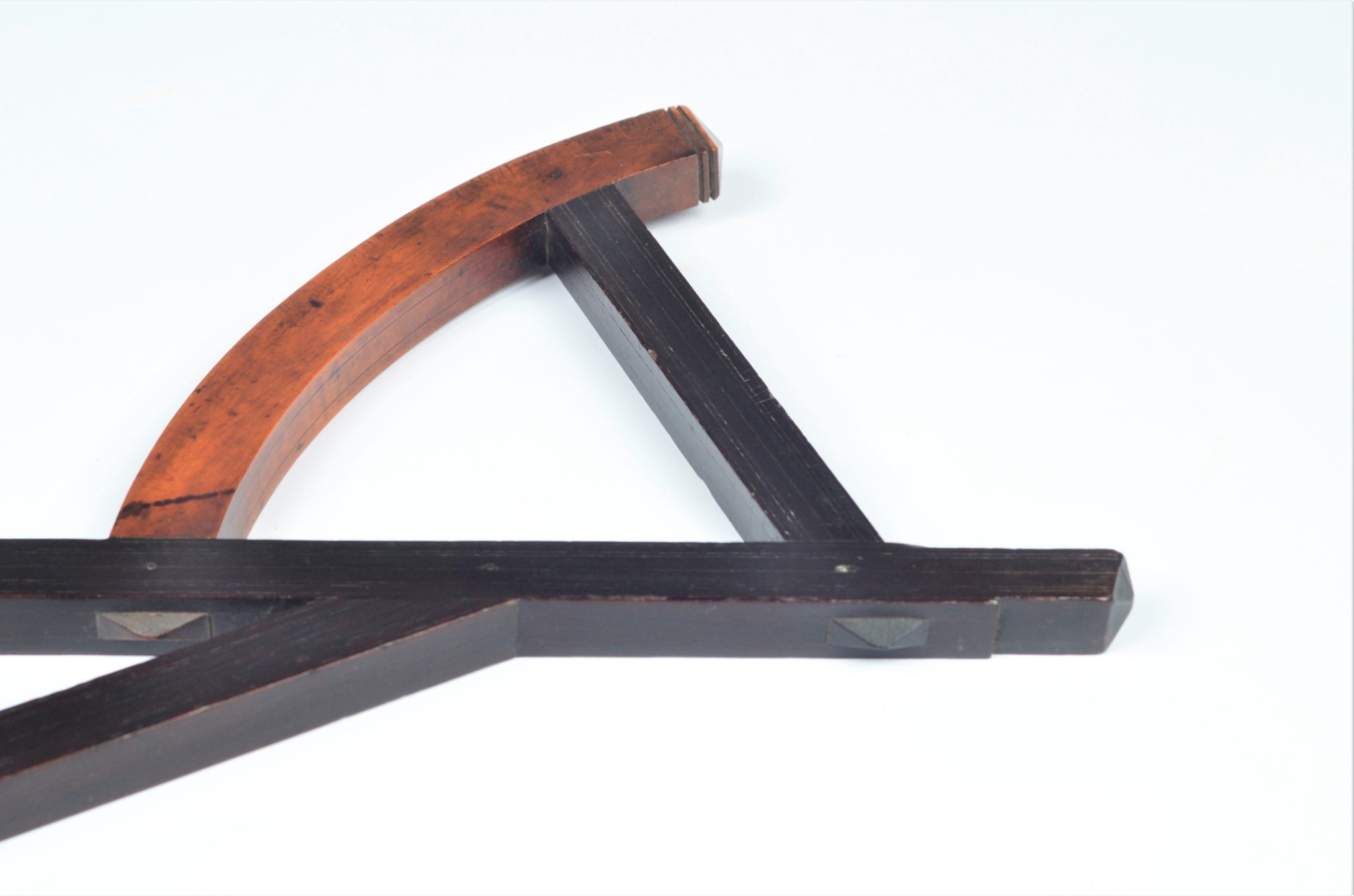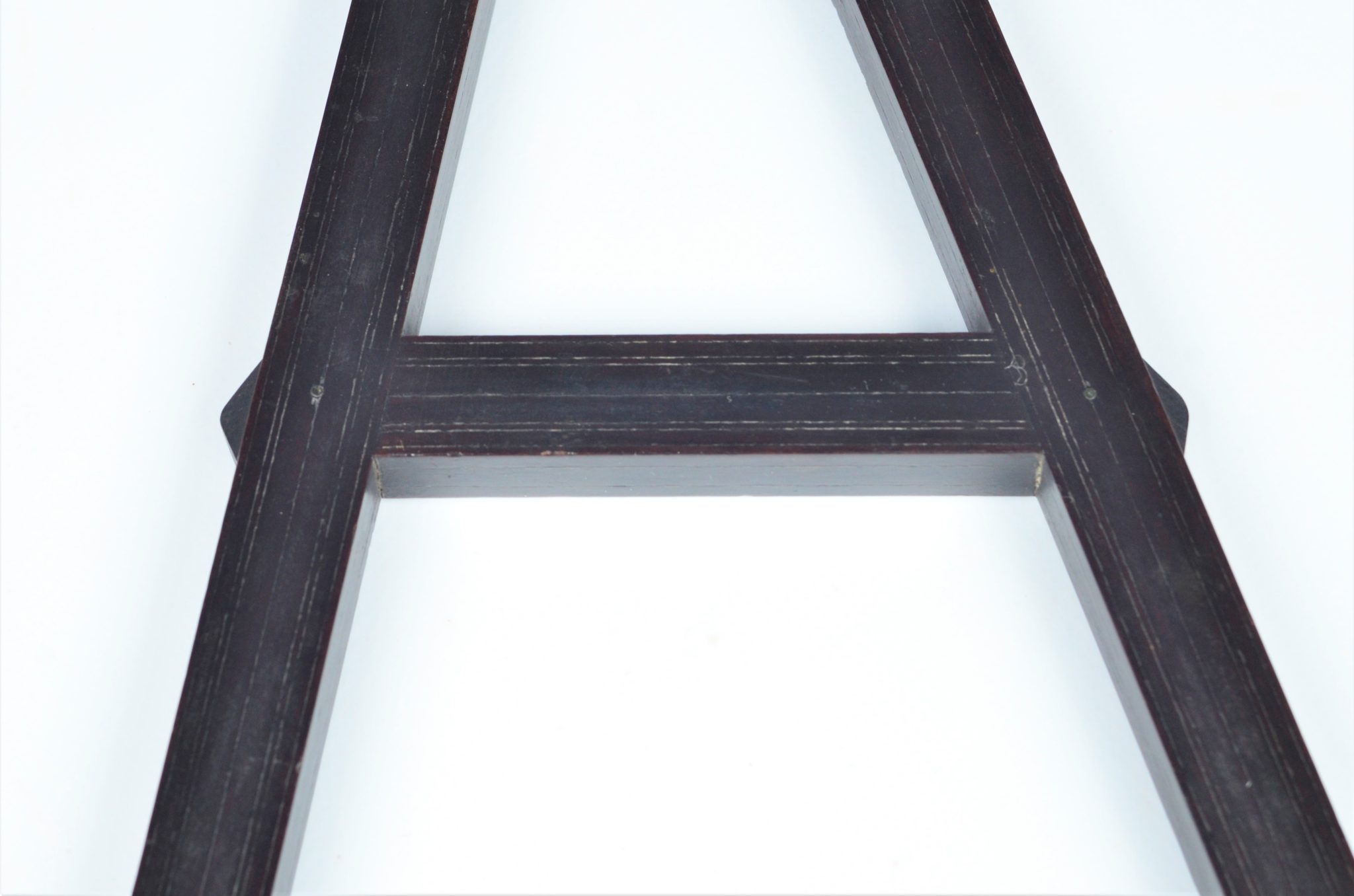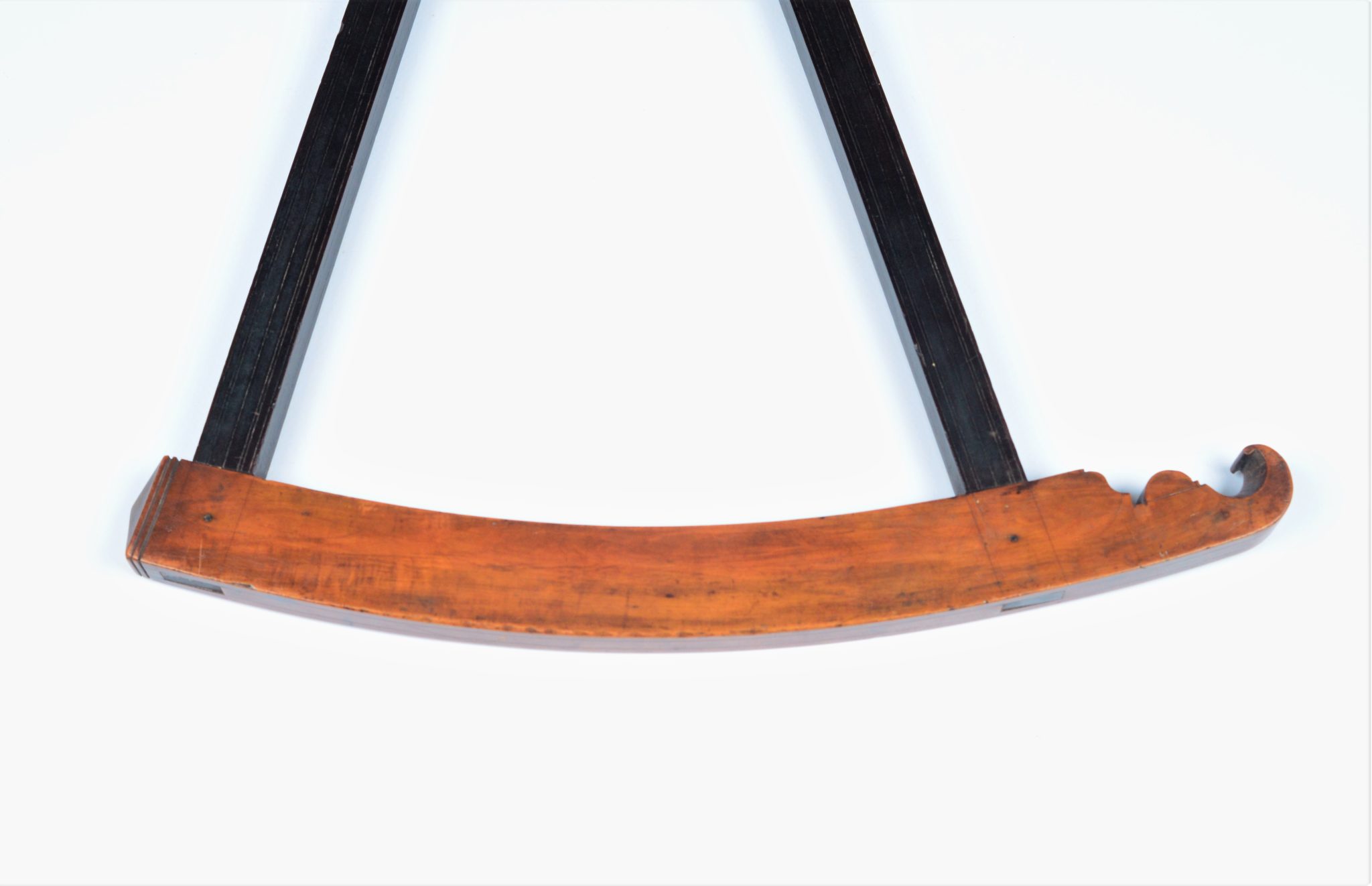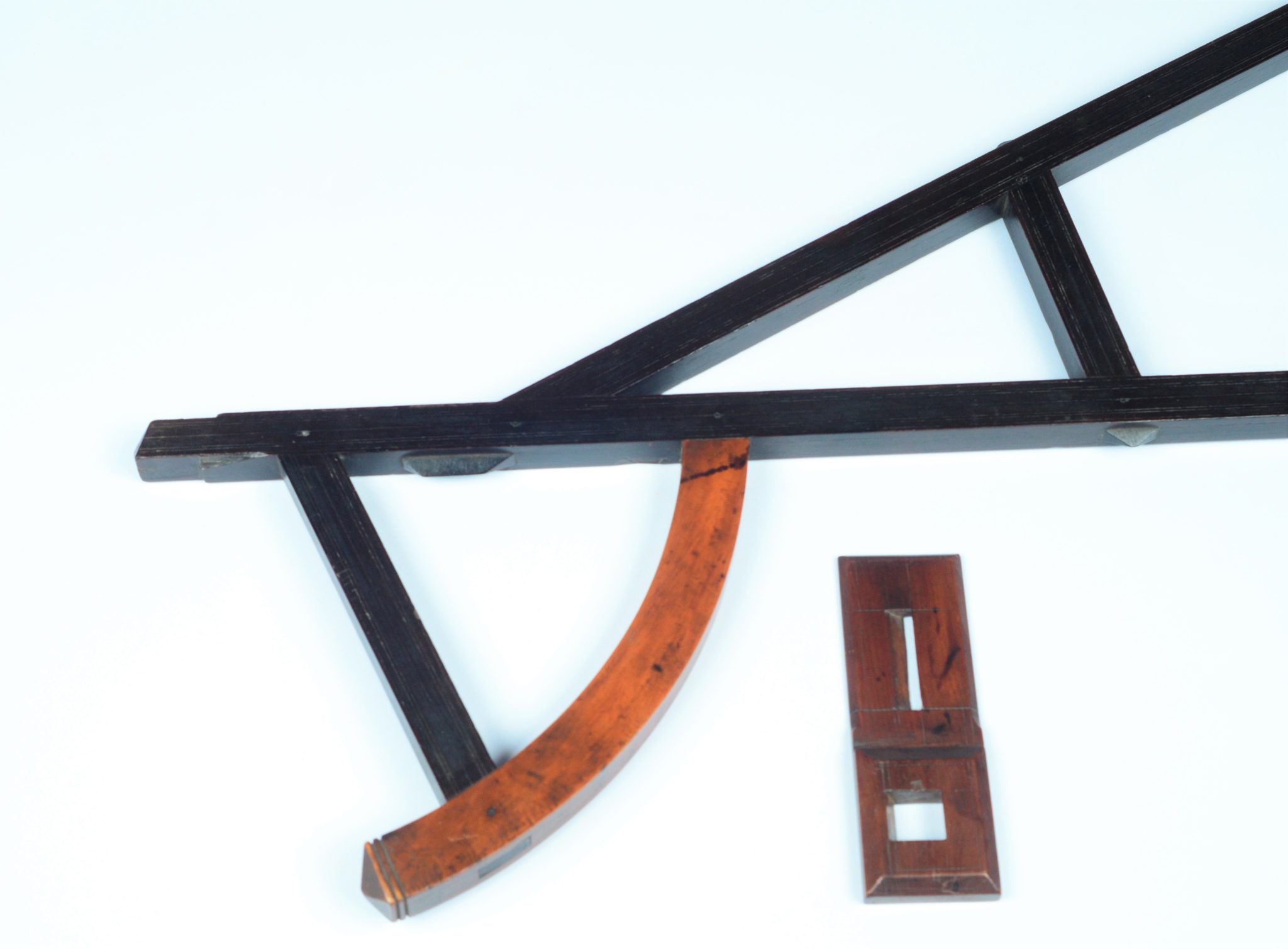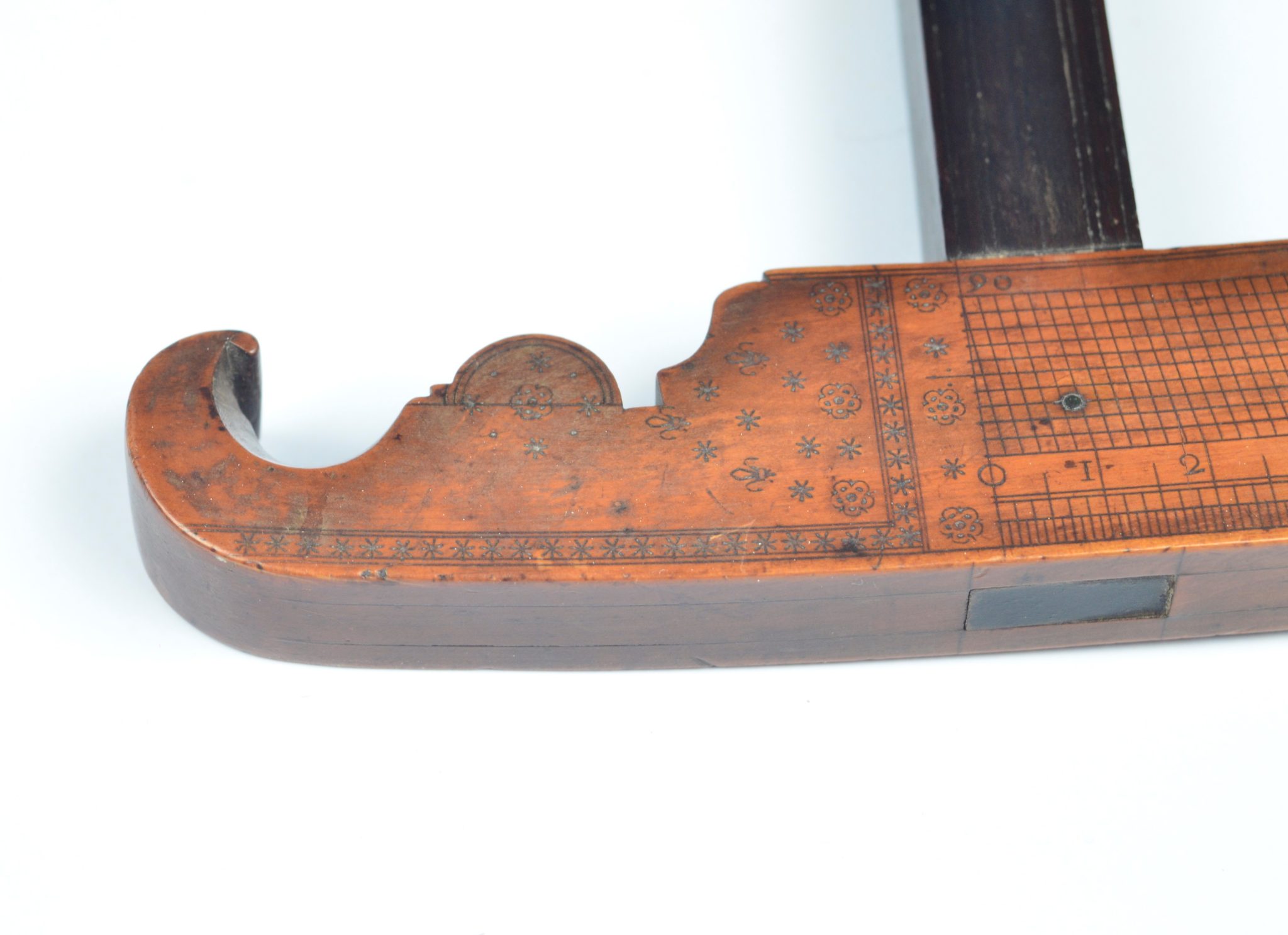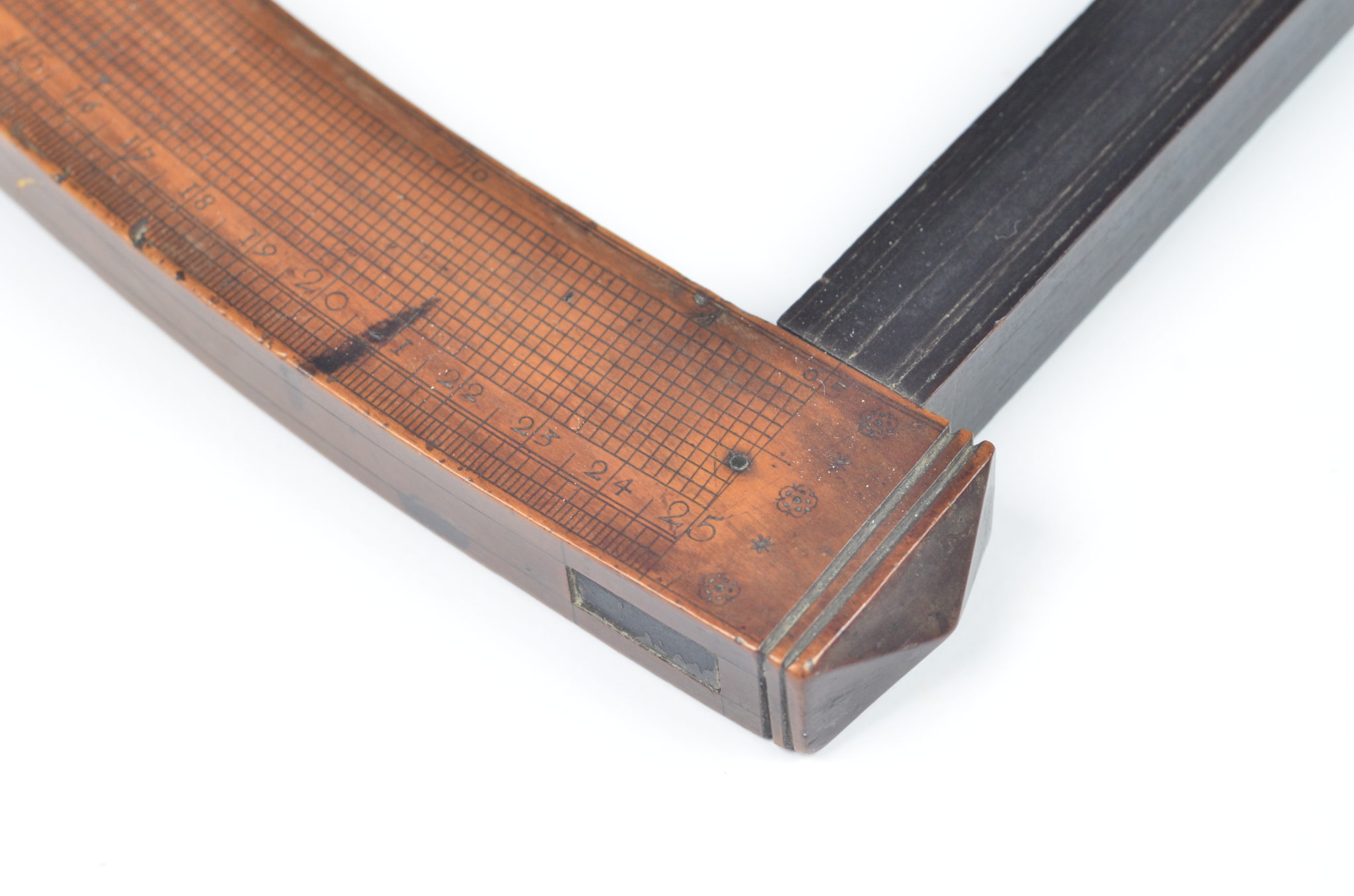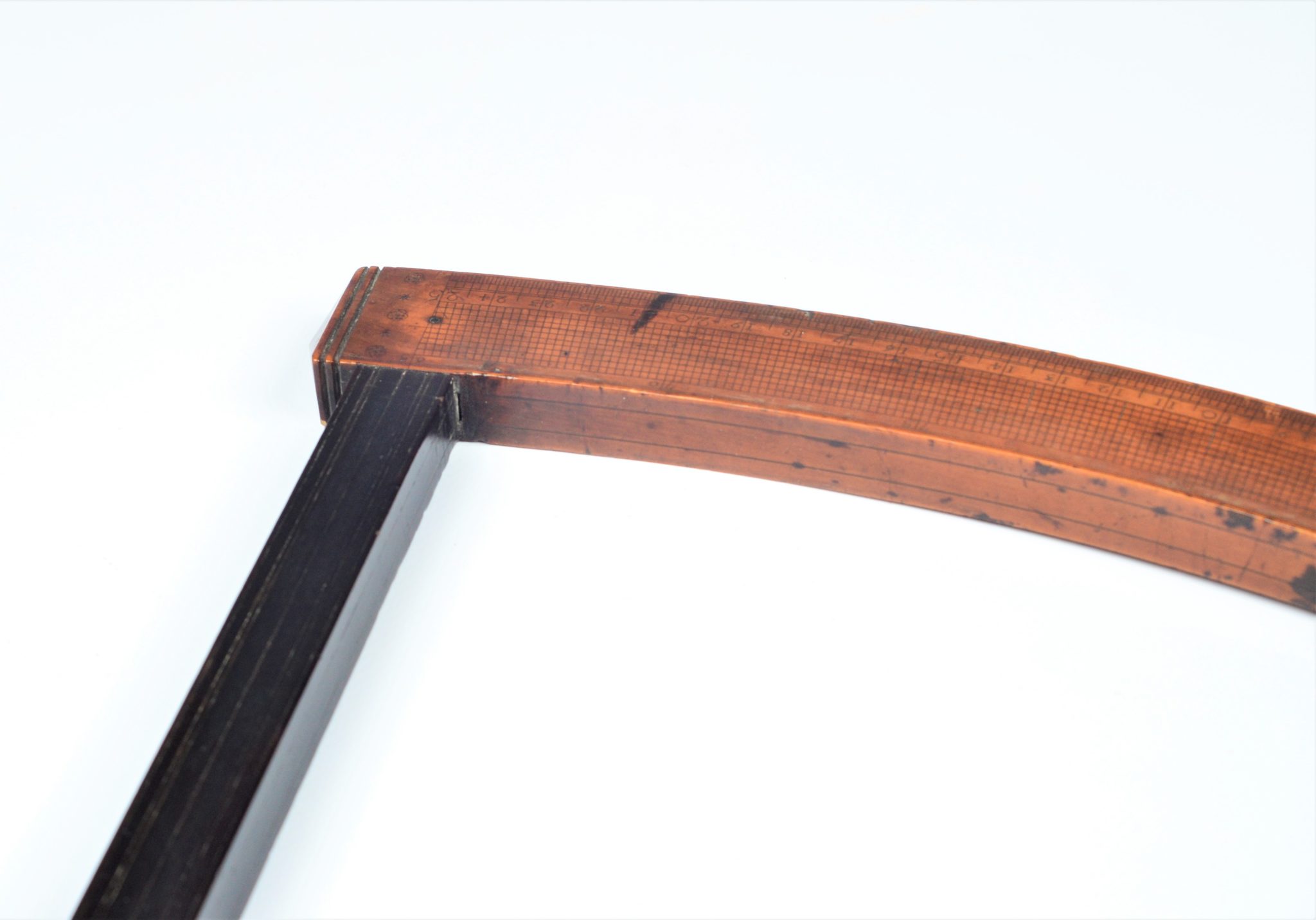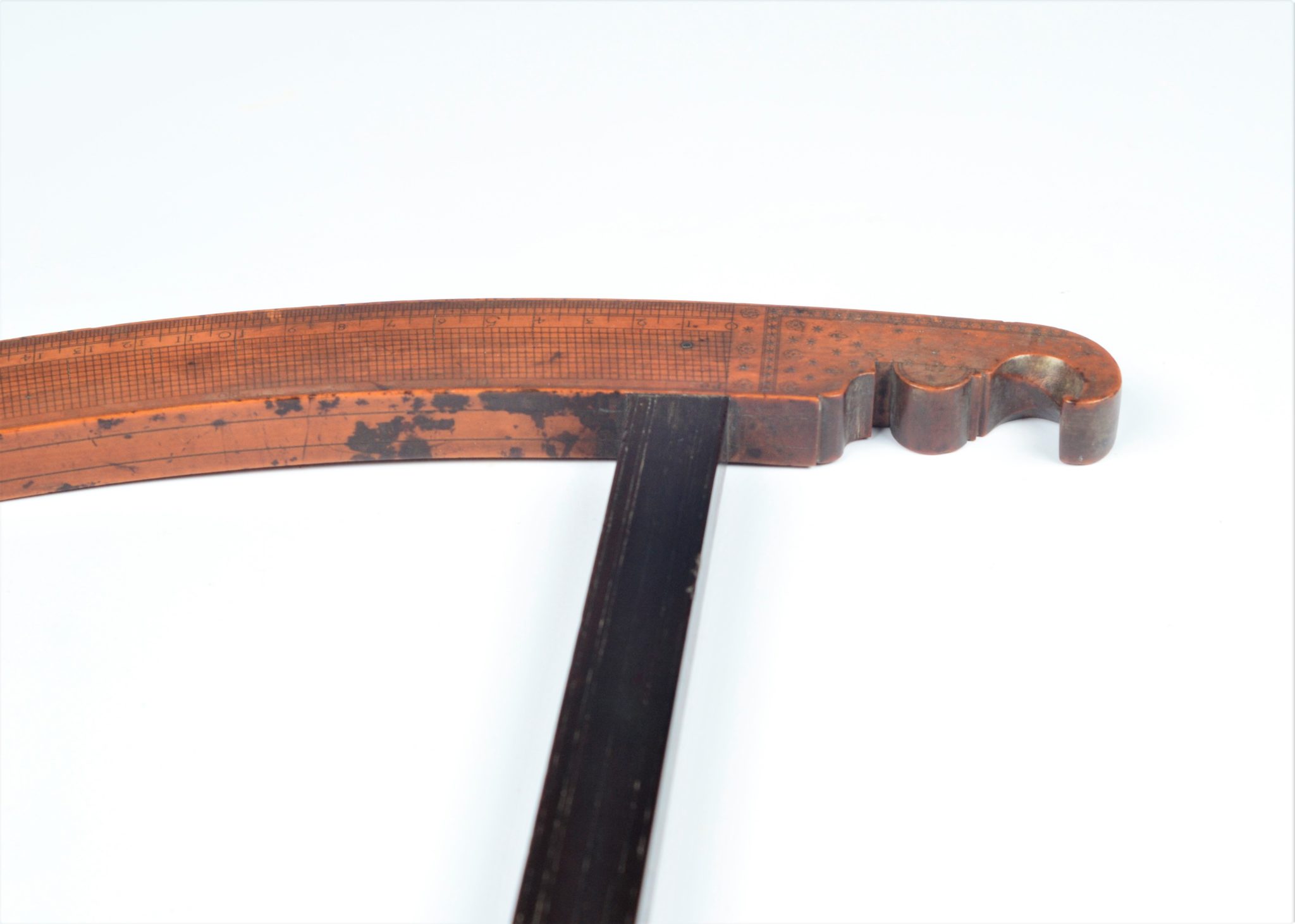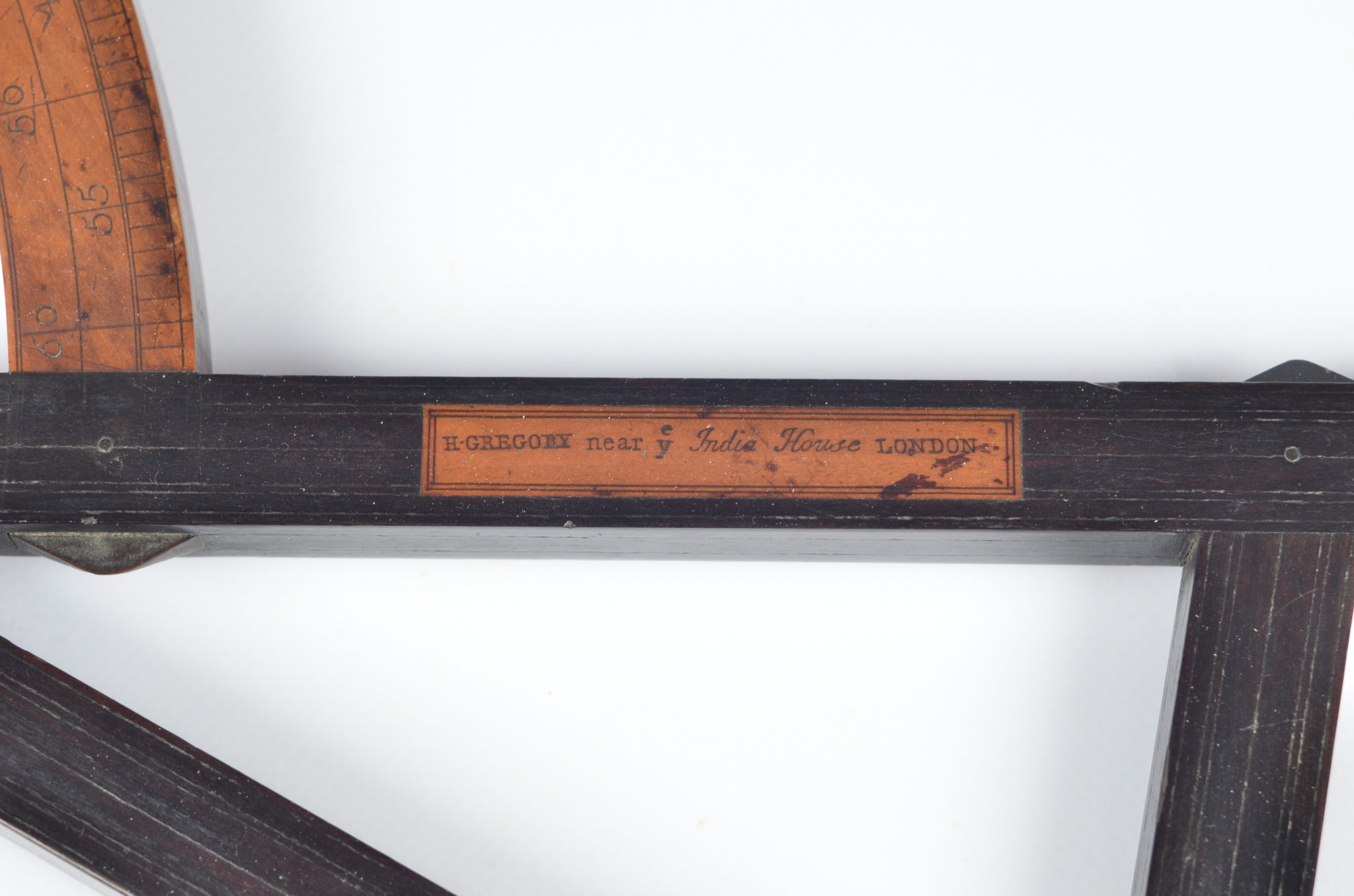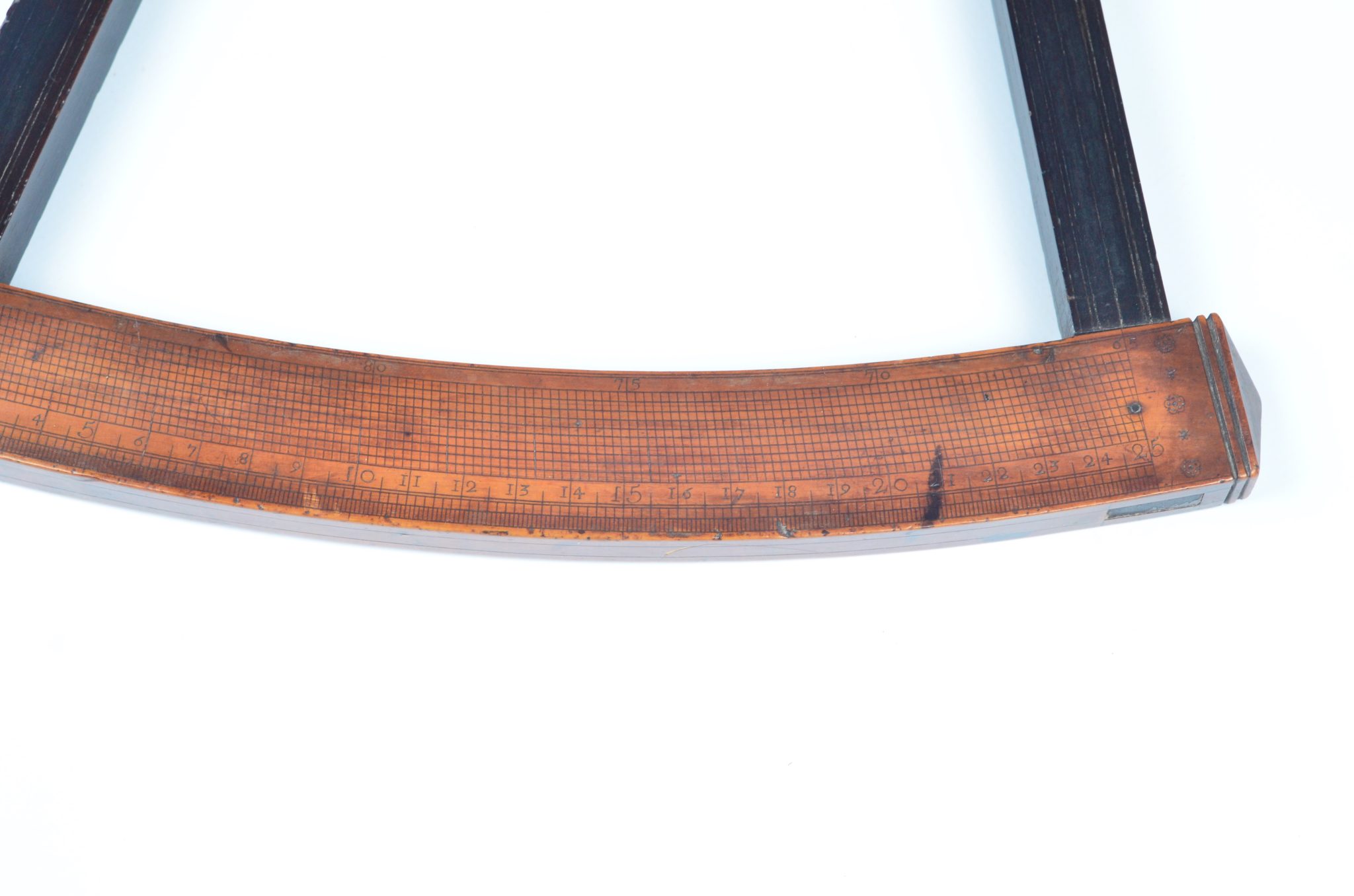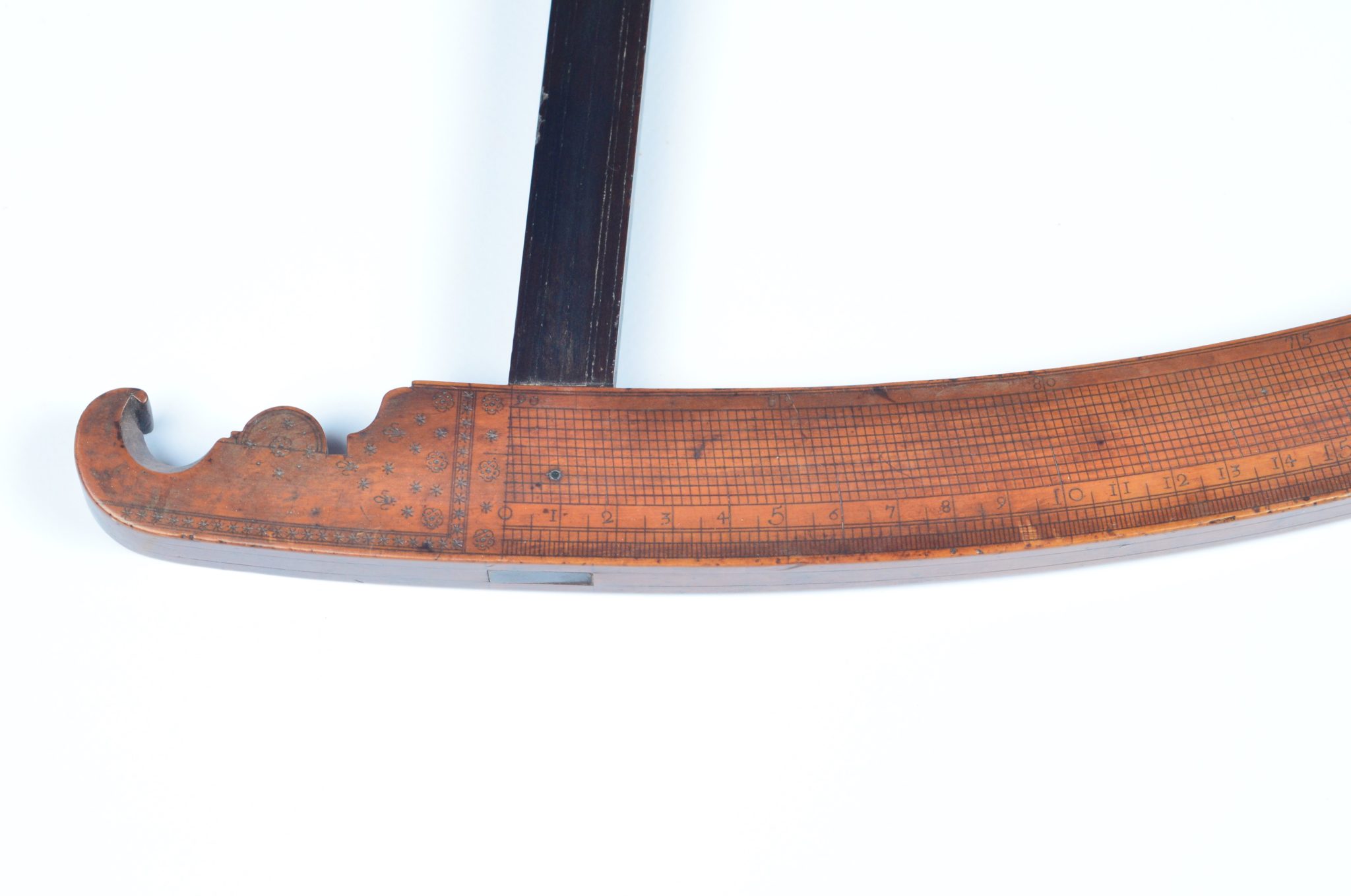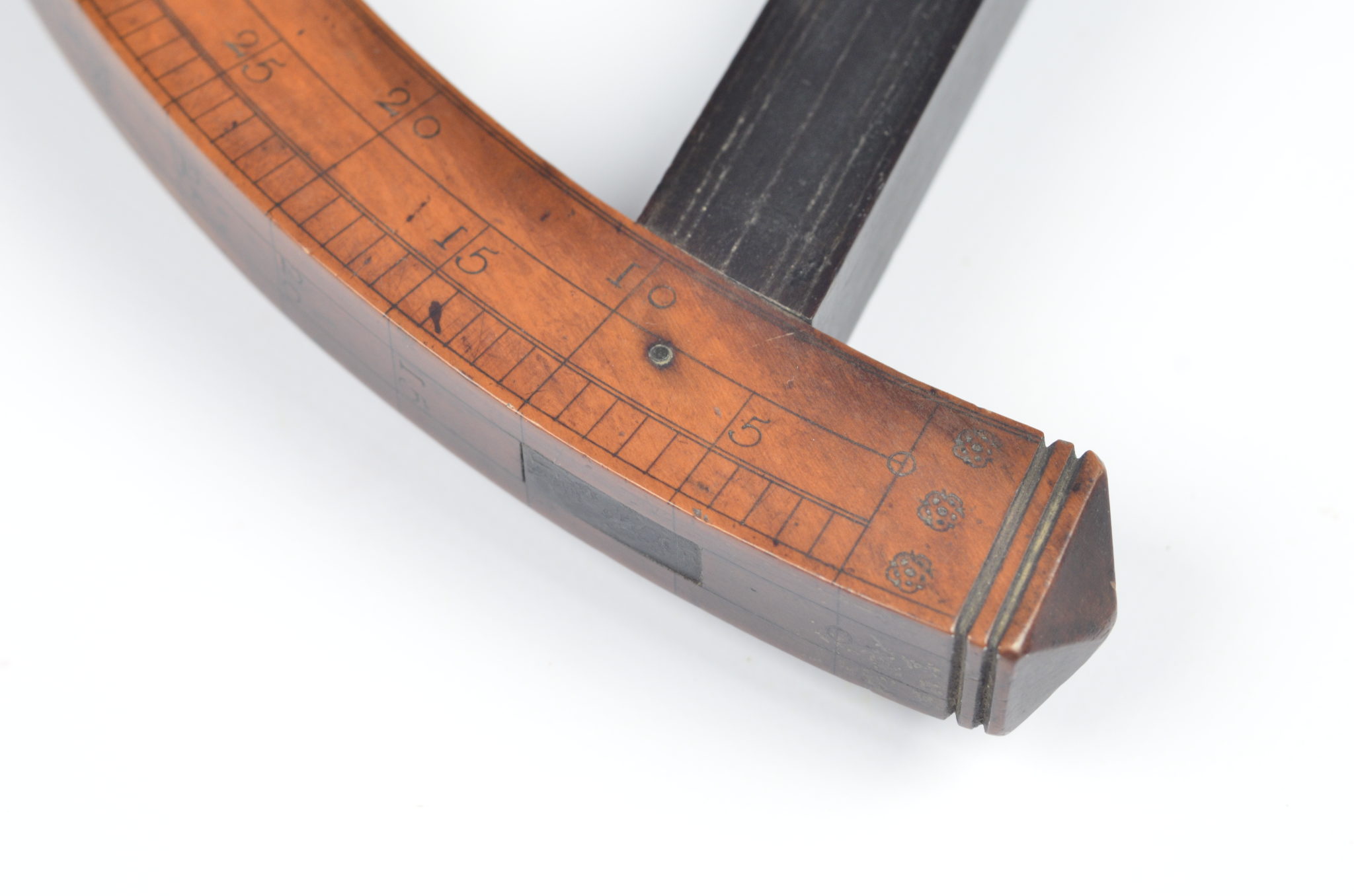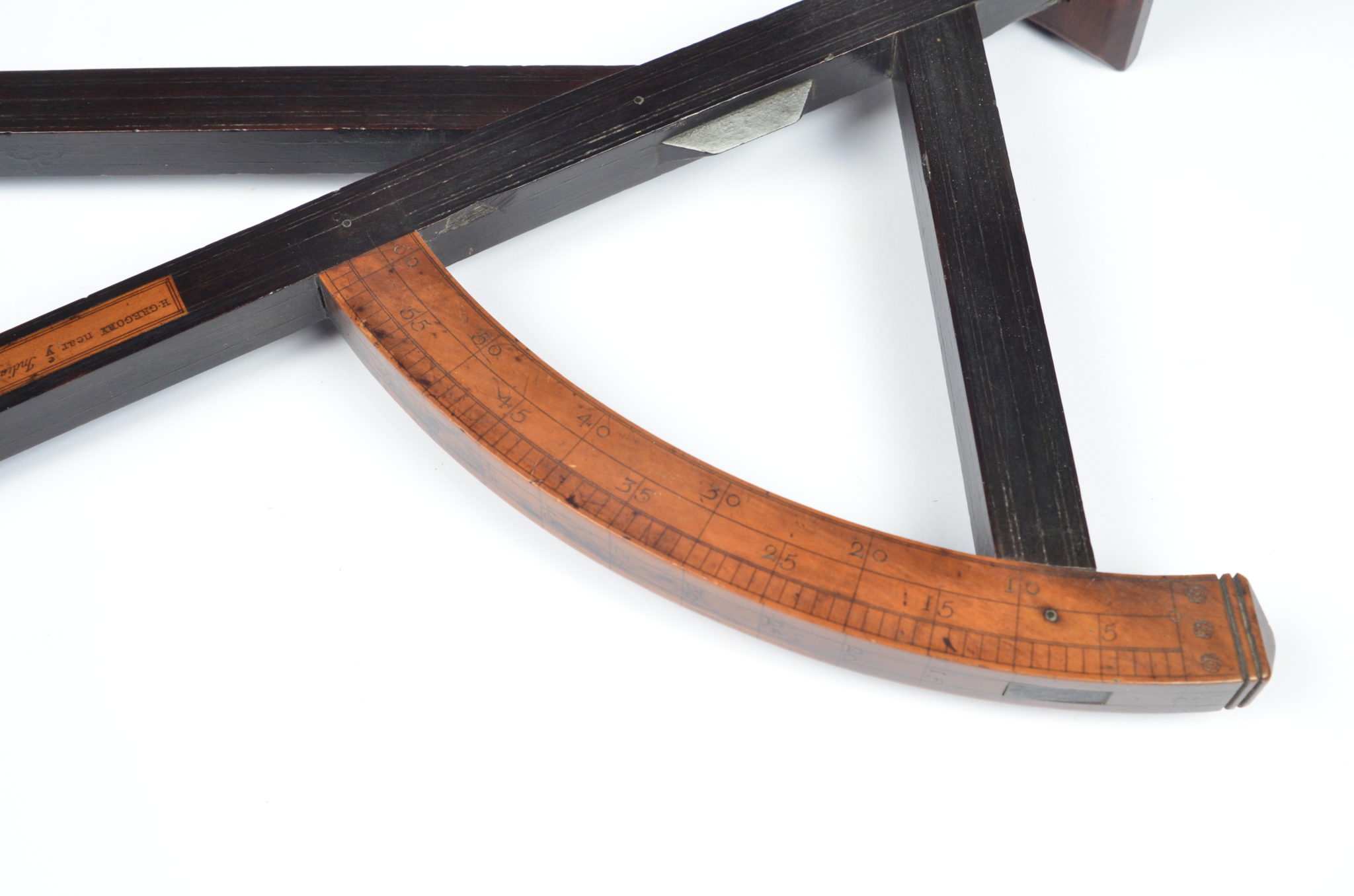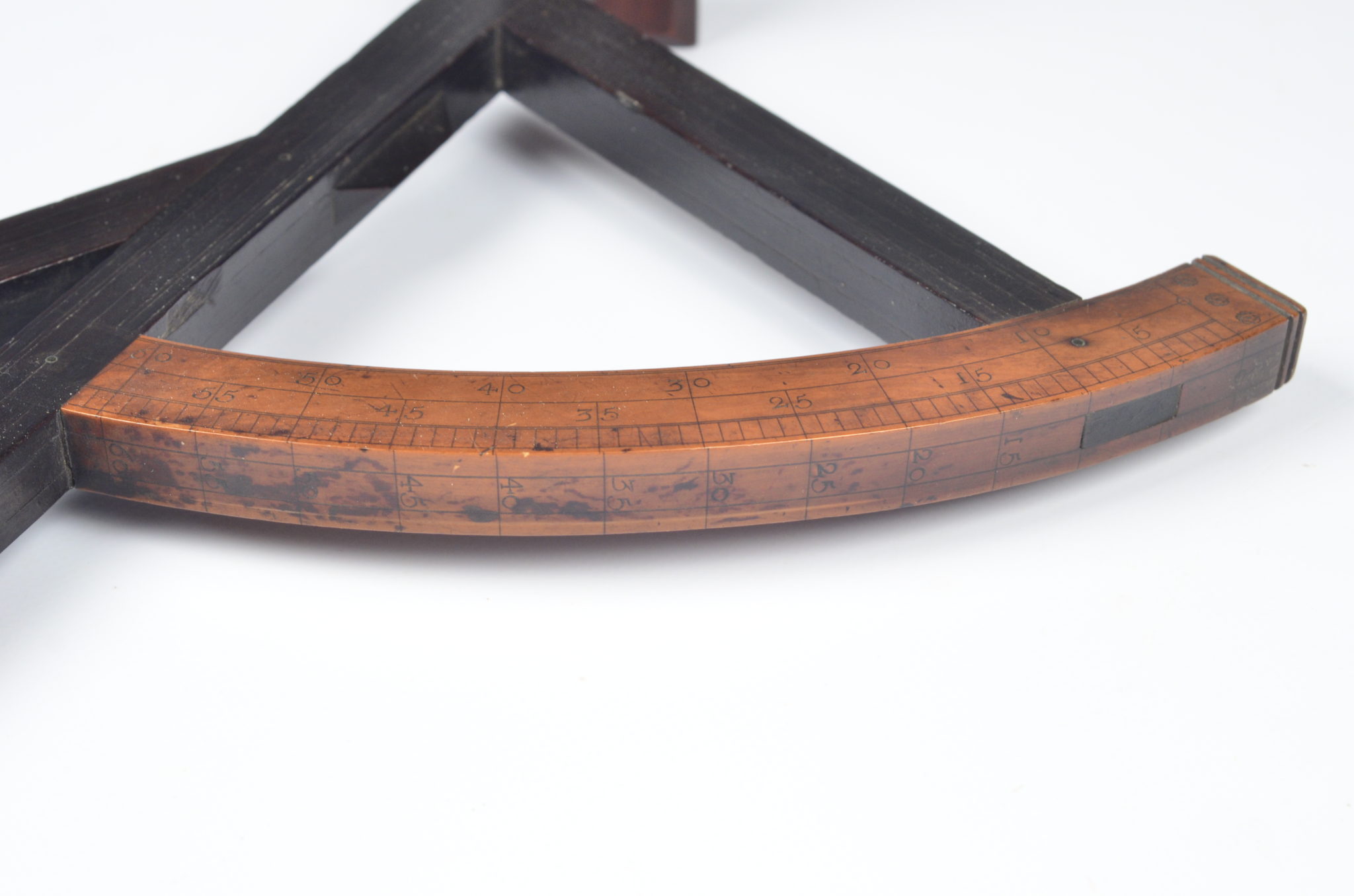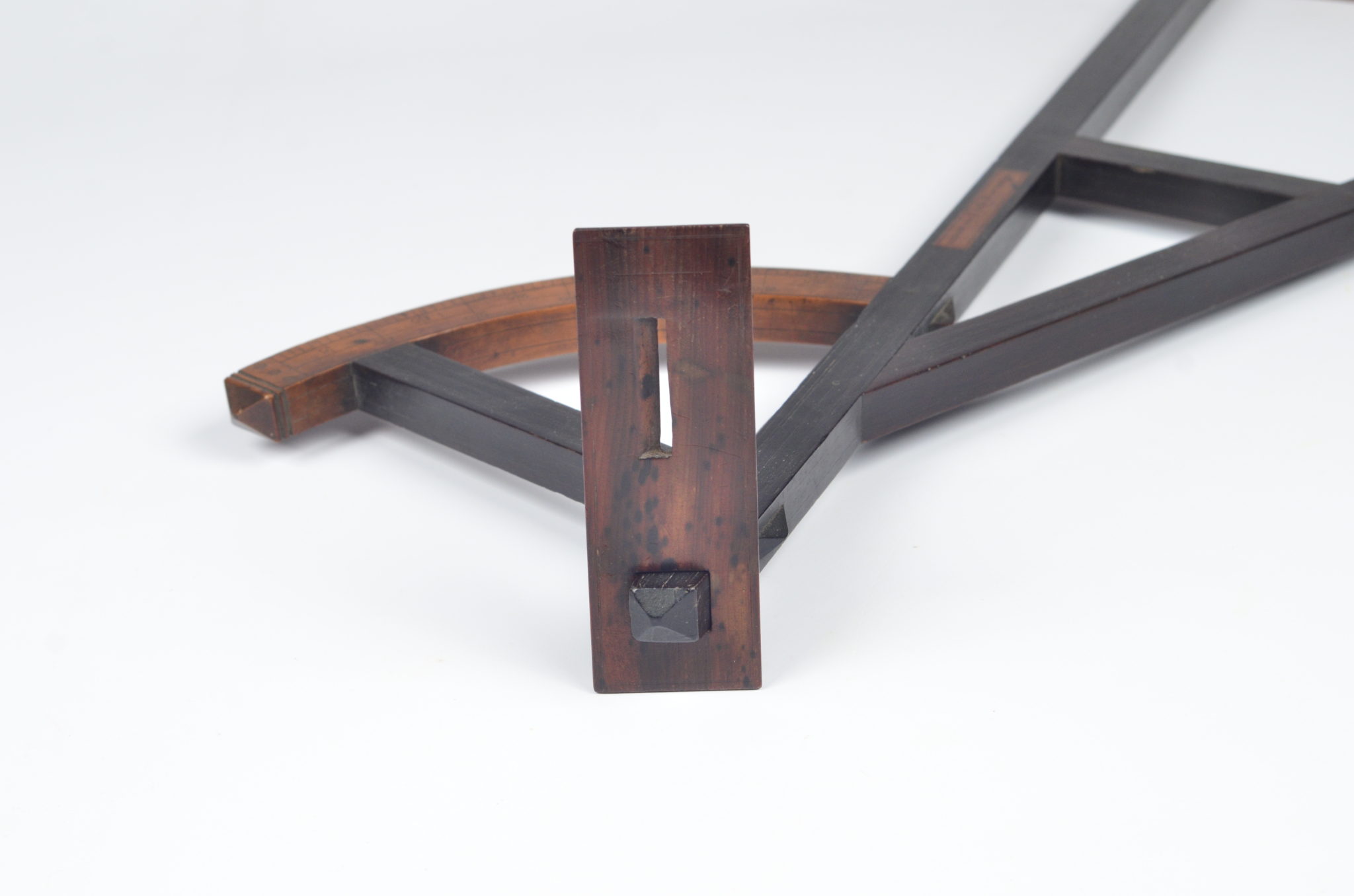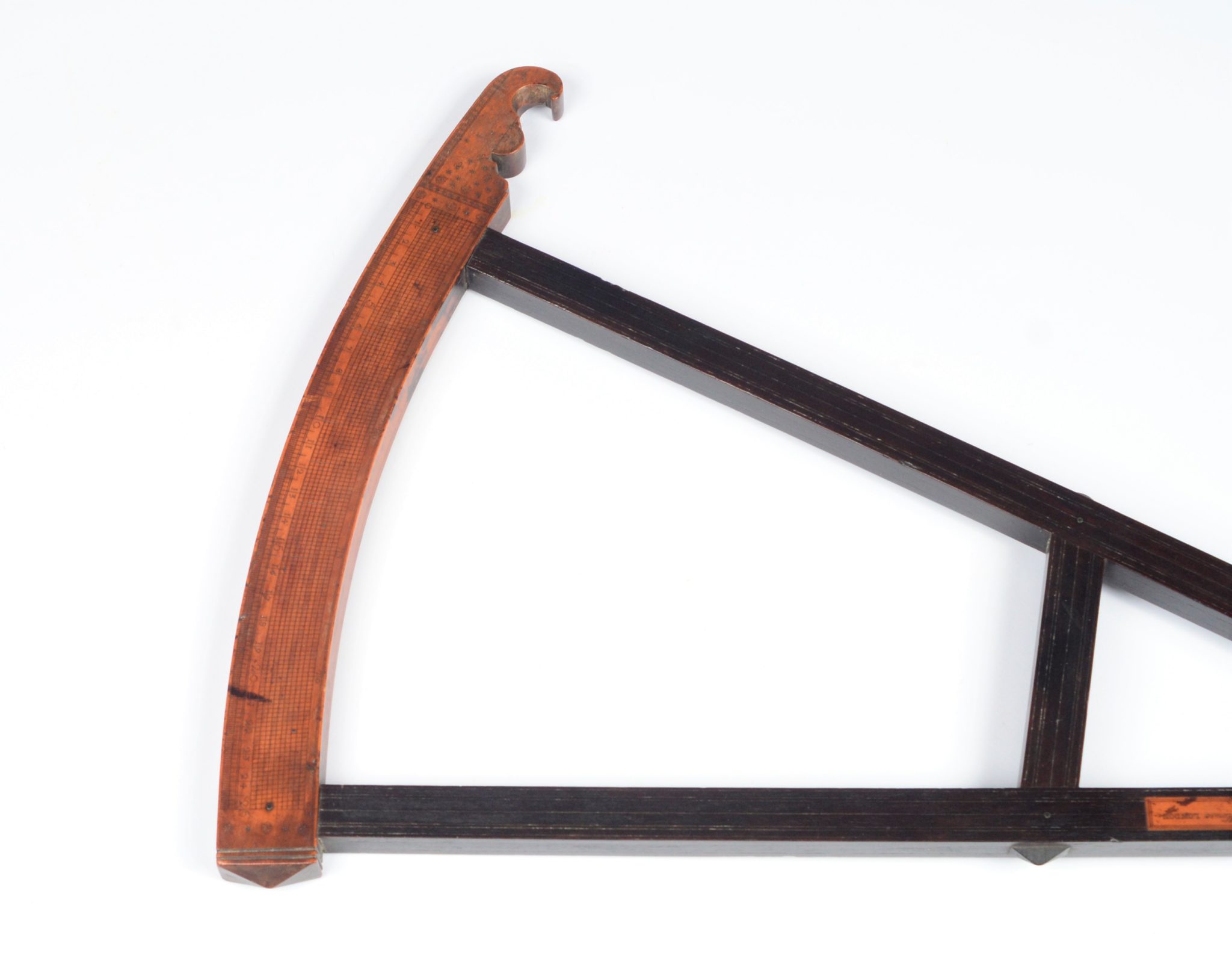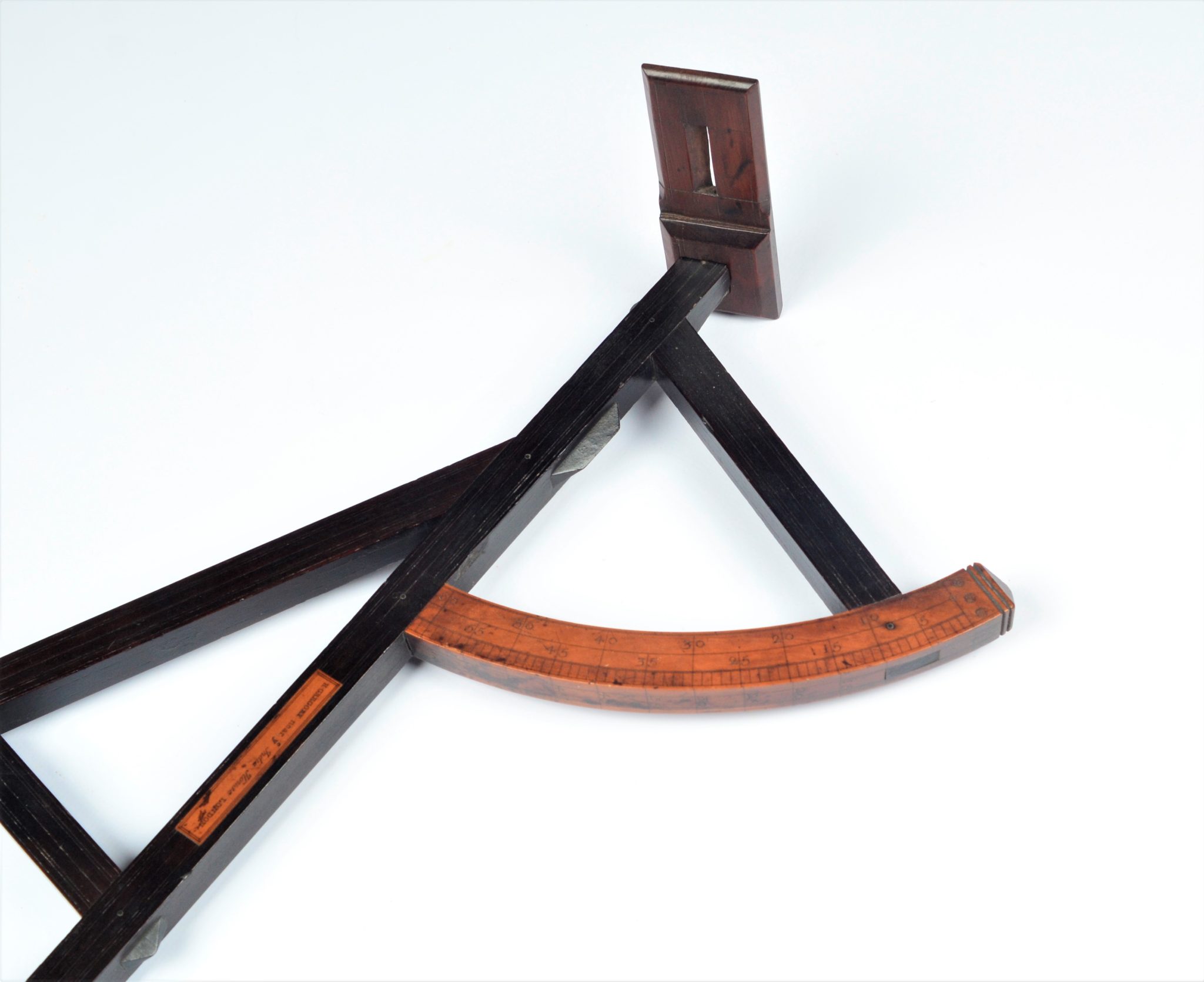Davis Quadrant or Backstaff with vanes – H. Gregory, London, ca. 1780
Stock Number: NM.5-34
POA
After the astrolabe and the Jacob’s staff, in 1595 John Davis invented the backstaff to determine the altitude of the sun at sea.
Circa
1776-1783
Country of manufacture
UK and Ireland
Description
After the astrolabe and the Jacob’s staff, in 1595 John Davis invented the back staff to determine the altitude of the sun at sea. His improved design became known as the Davis Quadrant. The observer stood with his back to the sun and didn’t have to look at the bright sunlight. The instruments has two concentric graduated arcs centered on the far end. The larger scale runs from 0 to 25 degrees, the other one from 0 to 65. Together 90 degrees, a quadrant of a circle. On the edge of the small arc are placed secondary scribe marks, slightly offset to correct for the sun’s diameter of 16 arc minutes.
The back staff remained in use until the late 1700’s when the octant and sextant became the new preferred tools over the back staff. The transversal nonius can be read accurate at two minutes.
This instrument is made of box wood with an pear wood inlaid plate with the name of the maker in the main strut and with brass rivets. The scales are also made of pear wood. It has an original horizon vane. The other two vanes are exact copies of the Jonh Dupee back staff, in-house made of old pear wood. The lens in the shadow vane is specially made with the required power of 4 dioptres and a focal length of 20 centimeters. The lens concentrates a bright spot of sunlight on the horizon vane which allows the instrument to be used when clouds made the sun less bright. The vanes have brass pressure plates for holding them tightly in place on the degree arc. The sight vane has an inlaid brass pinhole sight. Decorative fleurs-de-lis and other decorative stamps are stamped in the frame. The transversal scale on the degree arc reads from 0° to 25° by 5 arc minutes, and reads to 1 arc minute along the fiduciary edge of the sight vane. The graduation on the sixty five degree arc is from 0° to 65° by 1°.
Henry Gregory and his son, makers of nautical instruments, had their Navigation Warehouse from 1776-1783 at 148 Leadenhall, London. In 1783 they continued as Gregory and Wright and from 1789-1792 as Gregory, Gilbert and Wright (Webster database).
An identical instrument is in the collection of the Bristol Museum.
Date: 1776-1783
HWL: 63.5×35.5×1.5 cm
Signed: H. Gregory near ye India House London
Origin: England
Condition: excellent, little wear consistent with age and use
Catalog: NM.5-34
Became curious? More interesting objects can be found at www.archipel-img.com
Ask the Dealer
Dealer information
 Archipel
Archipel
Welcome to the catalogue of Archipel International Maritime Gallery, specialist in nautical antiques and collectables.
Archipel International Maritime Galery in the Netherlands, sets itself to maritime objects, globes and sea charts of before 1900. The managing director worked as officer with the mercantile marine and the Royal Navy. As curator he was connected to one of the University Museums in the Netherlands. As seaman and curator he has a lot of knowledge of naval history. The entire Archipel collection can be found at the site Archipel-img.com.



